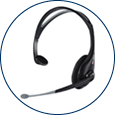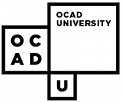 Index
Index
- Description
- Points to ponder
- Voice Recognition for Windows
- Voice Recognition for Macintosh
- Commercial Voice Recognition/Automatic Speech Recognition Software
- Digital Voice Recording Products
- Microphones
- Adaptive Technology Interface
- VoiceXML
- Online Resources
This list of products and resources is for reference purposes only and does not reflect endorsement by the IDRC.
Description
Voice Recognition allows a user to use his/her voice as an input device. Voice recognition may be used to dictate text into the computer or to give commands to the computer (such as opening application programs, pulling down menus, or saving work).
Older voice recognition applications require each word to be separated by a distinct space. This allows the software to determine where one word begins and the next stops. This style of dictation is called discrete speech. Many people (especially those with learning disabilities) prefer these systems to the newer continuous speech.
Continuous speech voice recognition applications allow a user to dictate text fluently into the computer. These new applications can recognise speech at up to 160 words per minute. While these systems do give the user system control they are not yet hands-free.
Voice recognition uses a neural net to "learn" to recognize your voice. As you speak, the voice recognition software remembers the way you say each word. This customization allows voice recognition, even though everyone speaks with varying accents and inflection.
In addition to learning how you pronounce words, voice recognition also uses grammatical context and frequency of use to predict the word you wish to input. These powerful statistical tools allow the software to cut down the massive language data base before you even speak the next word.
While the accuracy of voice recognition has improved over the past few years some users still experience problems with accuracy either because of the way they speak or the nature of their voice.
Points to ponder - Questions to consider when shopping for voice recognition software
- Is it compatible with your computer's platform?
- What is the learning curve of the software?
- Does it integrate with existing word processing software?
- Does it ship with its own microphone?
- Does it have macro compatibility (that is, can you program simple commands that can be used to execute more complicated series of operations)?
- How fast is it?
- Do you need a remote model?
- Will you need a USB microphone (since it comes with its own sound card)?
Voice Recognition for Windows
- Dragon Naturally Speaking 9 (DNS) produced by Nuance is available in two versions: Personal and Home - Preferred and Standard Editions and Business and Professional - Professional, Legal and Medical Editions. DNS 9 is also offered in a SDK Edition for Windows developers and systems integrators. A product feature comparison matrix of the Professional, Prefered and Standard editions. DNS is available in language versions ('other then U.S. and Canadian)', including Australian English, Asian English, Indian English, UK English, Dutch, French, German, Italian, Japanese and Spanish.
- Specialized Medical Language Model for DragonNaturally Speaking from Trigram
- IBM Via Voice from Nuance - available in three different editions: Pro USB Advanced, Standard, Advanced and Personal.
- Metroplex Voice Computing, Inc (MVC) has developed hands/mouse free programs which utilize Dragon Systems speech recognition engines to dictate math.
Voice Recgonition for Macintosh
- IBM ViaVoice from Nuance - available in two different editions: Mac OSX and Simply Dictation
- MacSpeech has a line of speech recognition products (which enable the user to control the operating system) called Dictate.
- MAC OS X Leopard comes with Apple Speech Recognition , which allows the user to control their operating system. OS X Leopard also comes with VoiceOver, part of the 'universal access' within the Mac operating system, a screen reader that describes onscreen activity and a speech control feature for the keyboard.
- For interest or reference: The MAC OS X Accessibility page has a complete list of OS X Accessibility features.
Commercial Speech Recognition Software (Speaker Independent Voice Recgonition)
• Automatic Speech Recgonition from Loquendo
• icommunicator Voice Recgonition Software from ICommunicator
- Fonix offers two speech regonition interfaces for developers.
VoiceIn 4.0.1 Standard Edition (available in a number of different Roman based languages) and VoiceIn Game Edition , a voice command interface for XBox, PS2 and Mac and PC platforms.
Digital Voice Recording Products
These products allow a user to dictate text which can be translated at a later date by a voice recognition system.
- Olympus digital voice recorders
- A list of iListen compatible digital recorders, with links to instruction pages on how to use them.
- An overview of some of the current voice recorders used with Voice Recgonition is available from Nuance - you can also read a review of some digital recorders at voicerecgonition.com and select the recorders you want to compare in a feature comparison matrix
- Voice It Products - These products are designed to work with Dragon systems Naturally Speaking.
Microphones
- Parrot TalkPro Microphone Headset - this microphone usually ships with Dragon NaturallySpeaking. There is also a soundcard translator version.
- Andrea microphones - this product usually ships with IBM ViaVoice
- Telex Microphones for Speech Recognition
- Plantronics Computer Headsets for use with Voice Recognition software - both USB and analogue products
Adaptive Technology Interface
- Next Generation Technologies
- J-say Pro is a product which addresses the needs of visually impaired people who are unable to use the keyboard, or who want to take advantage of the additional functionality provided by the product.
VoiceXML
VoiceXML is to be the standard with which voice applications are developed on the Internet. It will be created by combining several mark up languages that already exist, which are based on the XML standard.
- JSML (Java Speech Markup Language) by SUN Microsystems
- Draft: Accessibility Features of Synchronized Multimedia Language [SMIL] and Checkpoints for SMIL
- VoXML at Oasis
- Audiomining from Nuance uses the DNS speech regonition to create XML speech index data for audio files which enables you to search and locate key words and phrases in audio files.
Online Resources
- "Say I Can" - online voice recognition book free of charge from this Berkley California publisher
- The NatSpeak InfoPages by Joel Gould contains a wealth of information about Dragon NaturallySpeaking, much of which you will find nowhere else. (Please note: users using screen readers will have difficulty using this site)
- Computing Out Loud is a site intended to help people using speech recognition software.
- The Voice Users mailing list discusses the use of voice recognition. One can also view the list archive.
- Speaking to Write - This project is sur-titled "Recognizing the Potential of Speech Recognition for Secondary Students with Disabilities," and the resources found on this site are quite useful, although the website is no longer updated.
- The Speaking to Write list-serv, on the other hand, is still quite active.
- Typing Injury FAQ Speech Recognition page
- Subvocal Speech Recgonition is being developed by NASA




